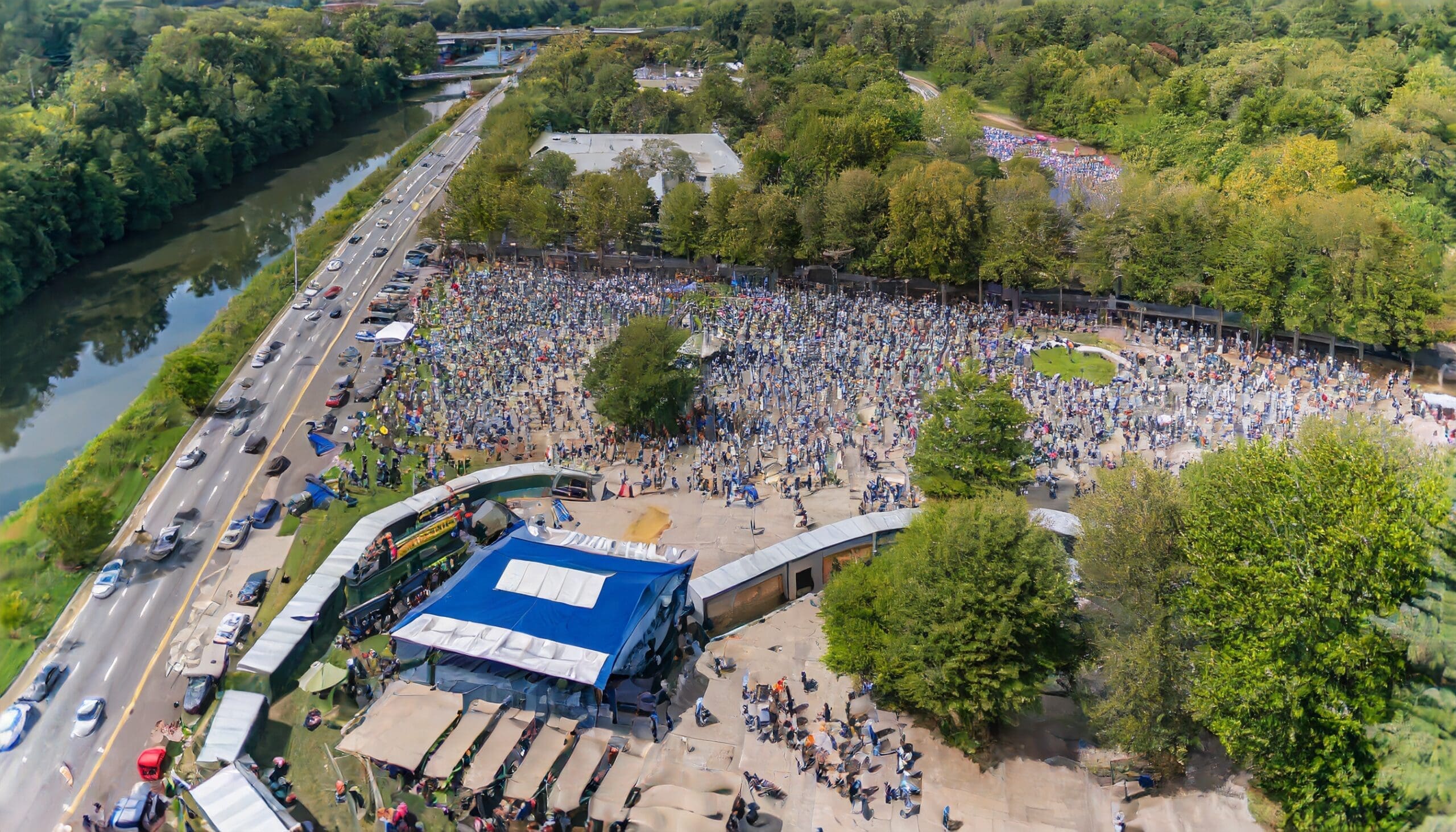Planning and executing successful fundraising events is a cornerstone of any impactful charitable organization. As nonprofits and community-driven initiatives strive to make a difference, the effectiveness of their fundraising efforts becomes pivotal.
In this guide, we will delve into actionable insights designed to elevate your fundraising events to new heights. Whether you’re a seasoned event organizer or venturing into the world of philanthropy for the first time, these seven tips are crafted to provide a roadmap for success. From defining clear objectives to expressing gratitude post-event, each tip is a building block toward creating memorable experiences and fostering ongoing support.
Join us as we explore the nuances of effective fundraising, emphasizing not just the what but the how. By the end of this journey, you’ll be equipped with the knowledge and strategies to transform your fundraising events into impactful milestones for your cause.
Define Clear Objectives for Your Fundraising Event
In the realm of successful fundraising, the importance of setting clear and measurable objectives cannot be overstated. As you embark on the journey of planning your next fundraising event, the foundation of success lies in a well-defined purpose. Let’s explore the first tip in our guide, focusing on the crucial step of establishing clear objectives.
Set Specific and Measurable Goals
Crafting a roadmap for success begins with setting specific and measurable goals. Whether you aim to raise a certain amount of funds, increase community engagement, or launch a new initiative, specificity provides direction. Instead of vague aspirations, define concrete benchmarks that can be quantified and assessed. For instance, rather than stating a goal as “increase donations,” specify the target amount and the timeframe in which you plan to achieve it.
Example: Rather than aiming to “increase donations,” set a goal such as “raise $20,000 within the next three months to support our community outreach programs.” This not only provides a clear target but also allows for effective monitoring and evaluation of your progress.
Align Objectives with Your Organization’s Mission
Ensure that your fundraising objectives align seamlessly with your organization’s overarching mission and values. When donors and participants see a clear connection between the event’s goals and the broader mission of your organization, it fosters trust and a sense of purpose. This alignment not only enhances the credibility of your fundraising efforts but also reinforces your commitment to making a meaningful impact.
Example: If your organization focuses on environmental conservation, ensure that your fundraising event’s objectives contribute directly to ecological initiatives. This alignment reinforces your dedication to your cause and resonates with donors who share a passion for environmental sustainability.
As you embark on your fundraising journey, remember that setting clear objectives not only guides your planning and execution but also serves as a beacon for your participants and donors
Understanding Your Audience for Fundraising Success
In the intricate tapestry of successful fundraising, one thread stands out as particularly vital: knowing your audience. As you plan and execute your fundraising event, a deep understanding of the individuals who support your cause becomes a powerful tool. Let’s delve into the second tip of our guide, emphasizing the significance of tailoring your event to your audience.
Conduct Thorough Audience Research
Before the first invitation is sent or the initial promotional material is created, conduct comprehensive audience research. Understand who your donors and participants are, what motivates them, and how they prefer to engage. This knowledge forms the cornerstone of an event that resonates with your audience. Surveys, feedback forms, and social media analytics are valuable tools to gather insights into the demographics, preferences, and expectations of your audience.
Example: If your organization supports a range of causes, audience research may reveal that a significant portion of your donors is particularly passionate about one specific cause. This insight allows you to tailor events and messaging to align with their interests, increasing engagement.
Create Personalized Experiences
Once armed with audience insights, focus on creating personalized experiences that speak directly to the hearts of your supporters. From personalized invitations to tailored event activities, the goal is to make participants feel seen and valued. The more your event resonates with their individual interests and preferences, the more likely they are to engage actively and contribute generously.
Example: If your audience consists of a mix of families and young professionals, consider incorporating diverse activities that cater to both demographics. A family-friendly zone and a networking session, for instance, can ensure that everyone feels included and invested in the event.
Understanding your audience is not a one-time effort but an ongoing process. Regularly update your knowledge of your supporters to adapt your strategies and maintain a strong connection.
Harnessing the Power of Digital Platforms in Fundraising
As the world becomes increasingly interconnected, the role of digital platforms in fundraising has grown exponentially. Effectively utilizing the vast reach and potential of online spaces can significantly enhance the success of your fundraising event. In our third tip, we’ll explore the strategies for establishing a robust digital presence and leveraging online avenues for fundraising success.
Establish a Strong Online Presence
In the digital age, a strong online presence is a non-negotiable element for successful fundraising events. This begins with maintaining an updated and user-friendly website that serves as the central hub for information about your organization and upcoming events. Additionally, active engagement on social media platforms amplifies your reach, allowing you to connect with a broader audience and generate excitement for your event.
Example: Regularly update your website with engaging content, including event details, success stories, and the impact of previous donations. Simultaneously, use social media platforms strategically to share event updates, behind-the-scenes glimpses, and interactive content to keep your audience engaged.
Leverage Crowdfunding and Online Donations
Unlock the full potential of online fundraising by incorporating crowdfunding and streamlined donation processes. Platforms such as Kickstarter, GoFundMe, or specialized fundraising software can facilitate easy and secure online donations. Providing multiple options for online contributions ensures that potential donors can choose the method that aligns with their preferences, making the process seamless and convenient.
Example: Integrate a crowdfunding campaign into your fundraising strategy, setting clear goals and leveraging the power of social sharing. Additionally, offer various payment options, including credit cards, mobile wallets, and direct bank transfers, to accommodate diverse donor preferences.
As we navigate the digital landscape of fundraising, the effective use of online platforms will be a key driver of success.
Collaborate for Success: Building Strong Fundraising Partnerships
In the world of fundraising, the power of collaboration cannot be overstated. Building strong partnerships enhances the impact of your efforts, opening doors to new opportunities and a wider support network. In our fourth tip, we’ll explore the strategies for identifying, engaging, and fostering long-term relationships with potential partners for your fundraising events.
Identify and Engage Potential Partners
The first step in building strong fundraising partnerships is identifying organizations that align with your mission and values. Whether they are businesses, other nonprofits, or community groups, a shared commitment to a cause lays the groundwork for a fruitful collaboration. Engage with potential partners through networking events, outreach campaigns, and direct communication to gauge their interest and discuss potential synergies.
Example: If your fundraising event focuses on education, partnering with local businesses or educational institutions that share a commitment to youth development can amplify your impact. Approach these potential partners with a clear proposal outlining the mutual benefits of collaboration.
Foster Long-Term Relationships
Successful fundraising is not just about securing support for a single event but about fostering long-term relationships. Invest time and effort in building relationships with your partners, understanding their goals, and finding ways to support each other beyond the immediate event. A strong, enduring partnership can result in continued support, shared resources, and a more significant collective impact.
Example: After a successful fundraising event, express gratitude to your partners and initiate conversations about future collaborations. A post-event meeting to discuss the outcomes, lessons learned, and potential areas for improvement strengthens the relationship and lays the groundwork for future endeavors.
As we navigate the landscape of collaborative fundraising, the strategic identification and cultivation of partnerships are key elements in achieving lasting success.
Crafting Unforgettable Fundraising Experiences
In the realm of fundraising, the success of an event goes beyond financial achievements. Creating memorable and engaging experiences for participants and donors is crucial for fostering a lasting connection with your cause. In our fifth tip, we’ll explore strategies for planning activities and incorporating storytelling to craft events that leave a lasting impact.
Plan Creative and Engaging Activities
The heart of a successful fundraising event lies in the activities that capture the attention and enthusiasm of participants. From interactive workshops to themed contests, consider creative and engaging activities that align with your cause and resonate with your audience. The goal is to provide a unique and enjoyable experience that participants will remember long after the event concludes.
Example: For an environmental conservation fundraiser, organize a tree-planting activity or a hands-on workshop on sustainable practices. These activities not only align with the cause but also create memorable moments for participants to cherish.
Incorporate Storytelling into Your Event
Beyond activities, storytelling is a powerful tool for creating emotional connections with your audience. Share compelling stories that highlight the impact of your organization’s work, the lives touched by donations, and the positive changes brought about by previous fundraising efforts. Through storytelling, you can convey the real-world significance of your cause and inspire a deeper sense of connection among participants.
Example: Feature success stories of individuals or communities positively impacted by previous donations. Whether through videos, testimonials, or live presentations, storytelling humanizes your cause and reinforces the tangible difference that each contribution makes.
As you embark on the journey of crafting unforgettable fundraising experiences, keep in mind that the activities and narratives you choose should align with the values of your organization and resonate with the emotions of your audience.
Simplify and Optimize: Streamlining the Donation Process
In the fast-paced world of fundraising, the ease and efficiency with which donors can contribute can significantly impact the success of your event. Streamlining the donation process ensures a frictionless experience for supporters, increasing the likelihood of their continued engagement. In our sixth tip, we’ll explore strategies for providing multiple donation options and optimizing the registration and payment processes.
Provide Multiple Donation Options
Recognize that donors have diverse preferences when it comes to contributing, so offering multiple donation options enhances accessibility. Whether through traditional methods like credit cards, online platforms, or innovative approaches like mobile payment solutions, providing a range of choices accommodates the varied preferences of your supporters. This inclusivity ensures that potential donors can contribute in a way that aligns with their comfort and convenience.
Example: Integrate a variety of payment methods such as credit cards, mobile wallets, and direct bank transfers. Additionally, consider offering options for one-time donations and recurring contributions, allowing donors to choose the method that best suits their preferences and financial capabilities.
Optimize the Registration and Payment Process
A user-friendly registration and payment process is integral to a seamless donation experience. Minimize friction points by simplifying the steps required for registration and payment. Ensure that the online forms are concise, easy to navigate, and optimized for both desktop and mobile devices. A hassle-free process encourages more people to complete the donation journey, contributing to the overall success of your fundraising event.
Example: Regularly test and optimize your online registration and payment processes to identify and address any potential issues. Prioritize a clean and intuitive design and consider incorporating progress indicators to keep donors informed about the steps involved.
As you focus on streamlining the donation process, keep in mind that a frictionless experience reflects not only on the efficiency of your event but also on the value you place on your donors’ time and commitment.
The Power of Gratitude: Follow-Up for Fundraising Success
The final act of a successful fundraising event extends beyond the event day itself. Expressing gratitude and maintaining communication with your donors post-event is not just a courtesy; it’s a strategic move that can strengthen relationships and lay the groundwork for future support. In our seventh and final tip, we’ll explore the significance of showing appreciation and implementing thoughtful follow-up strategies.
Show Appreciation to Donors
Expressing genuine gratitude to your donors is a fundamental step in building a lasting connection. Thank your donors promptly and personally, acknowledging not only their financial contribution but also their role in furthering your organization’s mission. Personalized thank-you emails, letters, or even phone calls can make donors feel valued and recognized for their generosity.
Example: Craft a heartfelt thank-you message that highlights the specific impact of the donor’s contribution. Include details on how their support will make a difference, emphasizing the collective achievement made possible by their participation.
Follow Up with Donors After the Event
The relationship with your donors doesn’t end with a thank-you; it evolves through ongoing communication. Keep donors informed about the outcomes of the event, sharing updates on how the funds were utilized and the progress made toward achieving the goals outlined in the event objectives. Regular updates foster transparency and demonstrate the tangible impact of their support.
Example: Provide post-event reports that detail the allocation of funds, showcase success stories, and offer a glimpse into the positive changes initiated by their contributions. This not only keeps donors engaged but also reinforces the accountability and impact of your organization.
In conclusion, as you navigate the landscape of fundraising, remember that expressing gratitude is not just a formality but a strategic tool for building a community of committed supporters. By implementing these seven tips, from defining clear objectives to maintaining post-event communication, you’ll be well-equipped to elevate your fundraising events to new heights and make a lasting impact on your cause.
Conclusion
As we conclude our journey through the intricacies of successful fundraising events, we’ve explored seven actionable tips designed to elevate your approach and maximize impact. From defining clear objectives to expressing gratitude post-event, each tip contributes to a comprehensive strategy that extends beyond mere fundraising to the cultivation of lasting relationships with your supporters.
By defining clear objectives, you provide your event with purpose and direction, setting the stage for success. Understanding your audience ensures that your efforts resonate with the individuals who make your cause possible, creating a connection that goes beyond financial contributions. Harnessing the power of digital platforms amplifies your reach and enhances the accessibility of your fundraising efforts.
Building strong partnerships expands the reach and impact of your events, fostering a network of support that extends beyond organizational boundaries. Crafting unforgettable fundraising experiences and streamlining the donation process not only make your events enjoyable but also encourage continued engagement from your supporters.
Finally, the power of gratitude and thoughtful follow-up strategies cements the bond between your organization and its donors. As you express appreciation and share the outcomes of your events, you lay the foundation for ongoing support and community building.
In applying these seven tips, you embark on a journey of strategic fundraising that not only meets financial goals but also creates a meaningful and lasting impact on your cause. Remember, successful fundraising is not a one-time event; it’s a dynamic process that involves careful planning, continuous engagement, and a genuine connection with your community.
Armed with these insights, you’re well-positioned to plan and execute fundraising events that leave a lasting imprint on your supporters and contribute significantly to the success of your organization’s mission. As you implement these tips, may your future fundraising endeavors be marked by success, community building, and a positive impact that resonates far beyond the event day.














